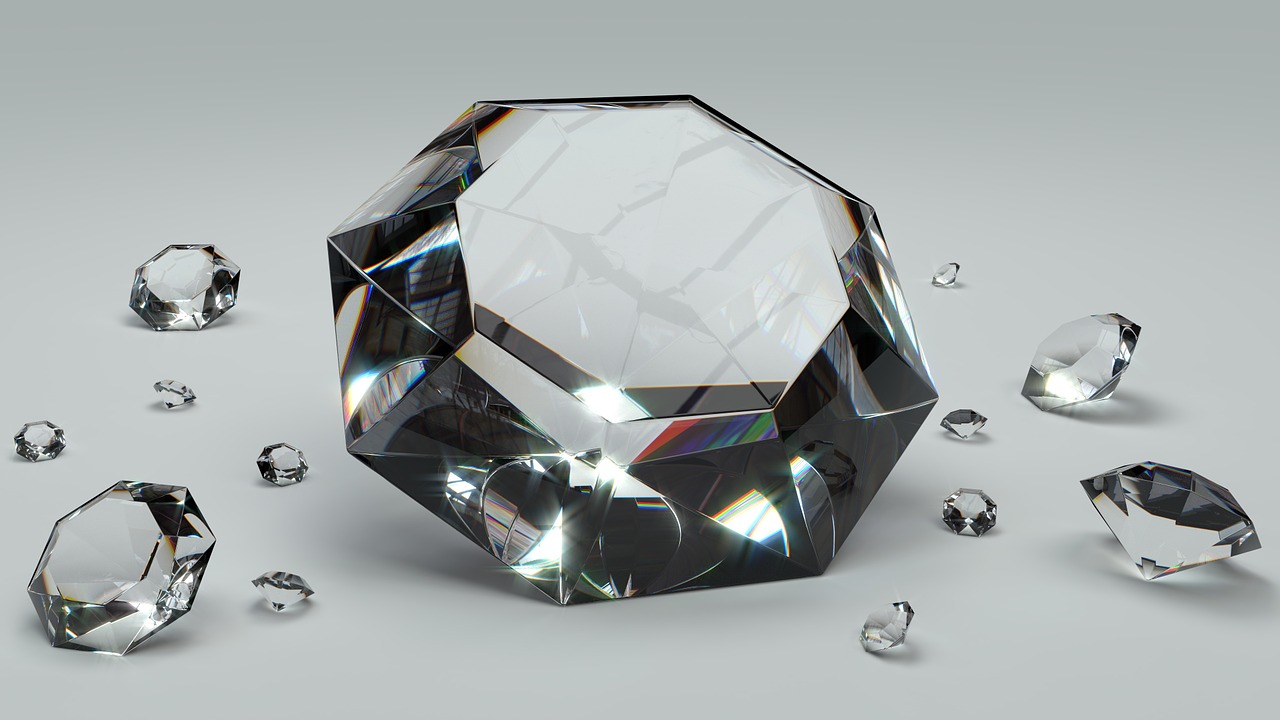What are GIA's 4 C's of Diamond Grading?
Each diamond is unique and is a miracle of time, place and change. Gemstone value is based on a combination of features, sometimes called value factors. As with all gemstones, diamonds with certain qualities are more rare, and more valuable, than diamonds that lack them We select highly desirable natural diamonds for our diamond and gold jewelry. Without a systematic way to evaluate and discuss these factors, there would be no to compare one diamond to another.

Until the middle of the twentieth century, there was no agreed-upon standard by which diamonds could be judged. GIA created the first, and now globally accepted standard for describing diamonds:
Today, the 4Cs of Diamond Quality is the universal method for assessing the quality of any diamond, anywhere in the world. The creation of the Diamond 4Cs meant two very important things: diamond quality could be communicated in a universal language, and diamond customers could now know exactly what they were about to purchase.
Each diamond’s value is based on its own unique combination of the 4 C’s. Often, a diamond has one value factor that stands out because it’s so rare. For example, colorless diamonds are scarce. Most diamonds have tints of yellow or brown. A colorless diamond has a higher color rating than a diamond that’s light yellow. Value and rarity are related. In this case, a colorless diamond is more rare and more valuable than with a slight yellow color. Similar relationships between rarity and value exist for the other C’s.
The 4 C’s describe the quality of a diamond in very precise terms. Here’s an overview of the GIA grading system:
Color
A diamond's color grade in the D-Z scale is actually a measure of absence of color. Diamonds containing little or no color are quite rare and receive higher color grades than those with visible color. The GIA color scale considers color in a range from colorless to light yellow or brown and how noticeable the color is.
GIA’s color grading system contains 23 letter grades from D to Z, where D represents the least amount of color and Z, the most. Each letter actually represents a range of color with differences which are so subtle that they are not noticeable to the untrained eye.
- D, E,F are grades of colorless diamonds
- G through J are grades of near colorless diamonds
- K, L, M are grades of faint yellow or brown
- N through R are grades of very light yellow or brown
- S through Z are grades of light yellow or brown
Clarity
Almost all diamonds have tiny imperfections (inclusions, blemishes, etc.) which occur in the course of the diamond’s formation or during the cutting and polishing processes. Diamonds with few or no imperfections receive the highest clarity grades. The clarity grade is a measure of the number, size, location, nature and relief (darkness or lightness) of these imperfections. Many of the imperfections are microscopic and do not affect a diamond's beauty in any discernible way. Diamond clarity grading only considers imperfections which are visible at 10 times magnification and when viewed in a controlled environment.
The GIA clarity scale has 11 individual grades, ranging from Flawless to I3.
- Flawless – F
- Internally flawless – IF
- Very very slightly included – VVS1, VVS2
- Very slightly included – VS1, VS2
- Slightly included – SI1, SI2
- Included – I1, I2, I3
Cut
When many people hear the term diamond cut, they immediately think of the shape of the stone (round, heart, pear shapes, etc.) or the way it is faceted (brilliant, emerald, step cuts, etc.). However, a diamond's cut grade is actually an objective measure of its ability to interact with light, called light performance. A diamond’s proportions affect its light performance, which in turn, affects its beauty and overall appeal. When a diamond is cut with the proper proportions, light is returned out of the top of the diamond to your eye. If a stone is poorly cut, light can be lost, negatively affecting the beauty of the diamond.
GIA has established 5 cut grades, but the cut grade applies only to round brilliant diamonds in the D to Z color range. The 5 cut grades are:
- Excellent
- Very good
- Good
- Fair
- Poor
Carat weight
A carat is a unit of gemstone weight based on the metric system. One carat is equivalent to 0.2 grams. All gemstones are sold by carat weight.
Many people erroneously associate carat weight with a diamond’s size. Just as a person's weight does not give a complete picture of his or her size, carat weight alone does not accurately reflect a diamond's size. To gain a better understanding of diamond size, carat weight should be considered along with the face-up dimensions of the diamond (girdle diameter of a round diamond; girdle length and width of an emerald cut, etc.), as well as the diamond's cut. Cut is an important consideration of diamond size because with a poorly cut diamond, much of the weight may be "hidden" in the girdle or pavilion of the diamond, making it appear smaller than its carat weight would imply. Just as height, weight and build give you a better idea of a person’s size, carat weight, cut and face-up dimensions give a clearer picture of a diamond’s size.
Credit Gemological Institute of America. For information, visit GIA's website www.GIA.EDU.
